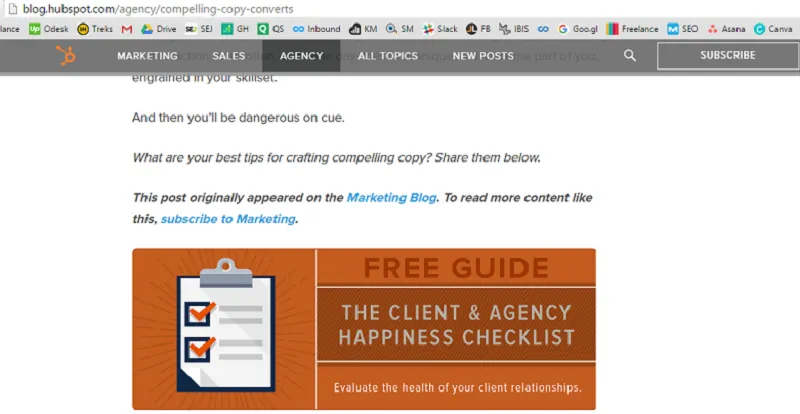5 user acquisition hacks that can get your startup traction
Entrepreneurs are always focussed on getting more growth and it doesn't matter which stage the startup is at. You could just have started your business from the basement or could have already built a team of more than 50 members, new customer acquisition is something that should be at the top of your list.

Here are some proven methods that can get your business traction:
#1 Remarketing ads
A lot of users will browse your website or install your app, but might not ever take the desired action like make a purchase, download an e-book, use the app every week, etc.
This is where remarketing ads come in. Have you ever gone on the Amazon site, looked at a product page but did not buy? You might have seen that the same product image would have followed around across the web on display ads.
Here is how startups can get more customers using remarketing ads.
- Understand where your users are getting stuck in the conversion process. For example, an e-commerce store might be witnessing a high drop off rate from the cart page.
- Try and brainstorm reasons for the abandonment: In the above example, it could be a probable case that users might not trust your new e-commerce store as much as they trust Amazon, or might be looking for a better price elsewhere.
- Create ads that solve the problems for your users: In this case, you could come up with ads that show images of the same product which users abandoned and show a couple of reviews in a visual form along with the image. Another set of image ads could offer a discount coupon on the product that users abandoned.
# 2 Lead generation on LinkedIn
In case you are running a B2B startup, LinkedIn should be the place where your marketing team needs to hang out more than anywhere else.
Although posting on your company page and increasing the follower base is a good idea, but the core lead generation process needs to take place via LinkedIn profiles.
Here is how your B2B startup can get started with lead generation on LinkedIn.
- Understand the exact job roles that should be targeted: If you are trying to sell a SaaS product to IT companies, your focus needs to be on the CTO or Head of technology of the company. You need to be targeting someone who understands the technical need of the product and also has the business authority to take a buying decision for the company.
- Start with a simple connect request and soft sell: Using your LinkedIn profile, get connected with the target lead and pitch them with a soft sell. Propose a short call. Don't try and tell them in the first go about how amazing the product is or how it can change the industry. They probably get a lot of pitches every day.
- Follow-up in a way that doesn't annoy: In case they don't reply back (which would be at least 50 per cent of the cases), follow-up with a short reminder at a significant interval.
"Make lead generation a daily process. If you invest two hours daily to it you can come up with three to five warm leads every week"
Record them in your CRM or use Google sheets to keep track of every lead and which stage in the funnel they have reached.
#3 Social media conversations
A lot of times, startups measure social ROI only by likes, followers, and engagement numbers. However, what most startups don't indulge in is social conversations.
A lot of times, people are tweeting about your product, or about things related to your product or service. If you can track the right conversations, dive into them and make a selling point, you can get direct transactions.
Here is how you should use social media interactions for better ROI.
- Understand what your customers might be talking about: If your startup talks about Indian cooking and food, it might be a good idea to track down tweets with hashtags like #cooking, #recipes, #Indianrecipes, etc.
- Use a tool like Hootsuite to track such conversations: HootSuite is a great tool to track down what people are talking about. The free account of Hoot suite lets you connect three social profiles.
- Start talking to people by making genuine conversations: Start with what people are talking about and indulge in the same. After you have struck a chord with them, tell them about your business with a soft sell tone.
#4 Give away something for free in lieu of an email
As some of you might understand, the concept of introducing a lead magnet and then nurturing the same is an effective method to do marketing.
Here is how this approach can work out for your startup.
- Create a valuable resource that your customers would love. For example, I am a big fan of the Hubspot marketing blog. And every time I reach the end of their amazing posts, they always have something to offer me. In this case, they are offering me a great guide for marketing agencies in lieu of an email.

Image : Hubspot Blog
- After you have their email, nurture the lead for conversion: Most businesses would consider sending promotional mails right after they acquired the email. However, the smarter form of marketing here is to nurture your lead by sending more educational content every week/month, gain their trust and send a promotional email only after a couple of conversations.
#5 Use the power of referral marketing
No matter how good your marketing is, word of mouth still remains one of the best customer acquisition techniques. To use the same, in a digital form, encourage people to refer your product or service in lieu of an incentive.
Dropbox has been a company that did this beautifully. In a course of 15 months, 2.8 million referral invites were sent by Dropbox customers.
"Before launching its referral marketing programme, Dropbox incurred a user acquisition cost of $233–$388 for a product that was priced at $99."
For effective referral marketing:
- Understand when to ask for a referral: You don't want to seem annoying to your customers. Understand how often customers engage with your product/service and pitch the referral message only to customers who have been using it for a while.
- Make the referral process super easy: I have seen companies where the referral marketing doesn't work because of poor UX. Make sure that customers can easily discover the referral feature and can invite friends in an even easier way.
Which marketing hacks are you going to use for your startup?
(Disclaimer: The views and opinions expressed in this article are those of the author and do not necessarily reflect the views of YourStory.)







